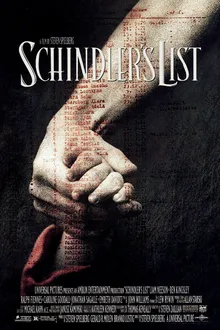Historical accuracy of Schindler's List

Historical accuracy of Schindler's List

Characters
Oskar Schindler
Oskar Schindler was a real member of the Nazi party who saved over 1,100 Jews by employing them in his factories. The film accurately portrays his complex personality and transformation during the Holocaust.
Itzhak Stern
Itzhak Stern was Schindler's real accountant who played a crucial role in managing the factory and compiling the list of workers to be saved. His influence on Schindler and administrative role are accurately depicted.
Amon Göth
Amon Göth was the real, notoriously brutal commandant of the Płaszów concentration camp. The film's depiction of his extreme cruelty and abuse is strongly supported by historical accounts and survivor testimonies.
Emilie Schindler
Emilie Schindler was Oskar's real wife who assisted him, particularly later at the Brünnlitz factory, showing compassion towards the Jewish workers. Her role is accurately, though briefly, portrayed.
Poldek Pfefferberg
Based on Leopold "Poldek" Pfefferberg (who later went by Leopold Page), a real survivor saved by Schindler who later urged author Thomas Keneally to tell Schindler's story. His resourcefulness is accurately shown.
Helen Hirsch
Based on Helen Jonas-Rosenzweig, Amon Göth's real maid. Her terrifying experiences under Göth and eventual rescue by Schindler are depicted based on her actual testimony.
More characters
Marcel Goldberg
Goldberg was a real Jewish Ghetto Policeman and later a clerk at Płaszów involved in compiling names for Schindler's list. His role in the list process is historically accurate.
Julian Scherner
Scherner was the real SS official holding that position in Kraków during the Nazi occupation. He represents the Nazi bureaucracy Schindler had to navigate.
Mila Pfefferberg
Mila was Poldek Pfefferberg's real wife, Ludmila, who was also saved by Schindler along with her husband.
Regina Perlman
This character represents the desperation of Jews seeking refuge and is based on the real Niusia Horowitz, who successfully pleaded with Schindler to add her parents to the list.
Danka Dresner (Girl in Red)
Based on members of the real Dresner family saved by Schindler. The girl in the red coat is a symbolic element, inspired by (but not identical to) Roma Ligocka, a survivor known for wearing a red coat.
Victoria Klonowska
Represents one of Oskar Schindler's documented extramarital affairs, highlighting his complex personal life alongside his heroic actions. Likely a composite or representative character.
Ingrid
Represents one of Oskar Schindler's documented extramarital affairs, highlighting his complex personal life alongside his heroic actions. Likely a composite or representative character.
Story
The creation of Schindler's List
The creation of Schindler's List, a list of Jewish workers whom Schindler claimed were essential to his factory's production, is a central event in the film and is historically accurate.
The rescue of the Schindlerjuden
Schindler's efforts to protect and ultimately rescue the Jewish workers on his list are the core of the story and are based on real events. He saved approximately 1,100 Jews from almost certain death.
The liquidation of the Kraków ghetto
The brutal liquidation of the Kraków ghetto is depicted in the film with harrowing realism. The chaotic violence and the indiscriminate killings are consistent with historical accounts.
The train journey to Auschwitz
The terrifying train journey of some of the Schindlerjuden to Auschwitz, and their subsequent return to Schindler's factory, is a factual event and is depicted in the film. This highlights the constant threat of deportation and extermination.
The factory in Brünnlitz
Schindler's relocation of his factory to Brünnlitz, in the Sudetenland, to continue employing his Jewish workers is a real part of the story. This was a desperate measure to save them from the advancing Red Army.
The liberation of the Schindlerjuden
The liberation of the Schindlerjuden by the Soviet army at the end of the war is accurately depicted as a moment of profound relief and liberation.
Schindler's financial difficulties
Schindler faced significant financial difficulties both during and after the war, which are acknowledged in the film. This adds to the complexity of his character and his motivations.
The scene at the end with the descendants
The film's closing scene, showing the descendants of the Schindlerjuden placing stones on Schindler's grave, is a moving and factual tribute to his legacy.
Setting
The Plaszów concentration camp
The Plaszów concentration camp, run by Amon Göth, is depicted with stark realism in the film. The brutality and arbitrary violence of the camp are accurately represented, based on historical accounts.
The overall depiction of the Holocaust
While focused on Schindler's story, the film provides a powerful and generally accurate depiction of the broader context of the Holocaust, including the systematic persecution and extermination of Jews by the Nazi regime.
